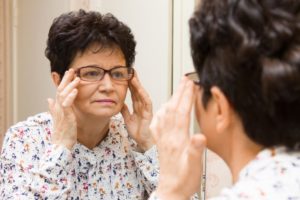
Poor vision can negatively affect the overall quality of life and health. As the ability to see diminishes, the risk of falls increases.
Falls are particularly dangerous for older adults as it can lead to lifetime complications. Researchers suggest that having poor vision more than doubles the risk of falls.
Until now, there was little information on how many falls are a result of poor vision. There is even less information on what happens to patients after they experience a fall as a result of poor vision. Researchers suggest that this information is important to have a better understanding of the impact poor vision has on fall risk, along with being able to come up with better fall preventive strategies for patients who are visually impaired.
To obtain greater insight, the researchers looked at data from the National Health and Aging Trends Study (NHATS).
Study participants were considered visually impaired if they had difficulties recognizing someone across the street or reading printed material, even with corrective lenses.
The participants were asked if they experienced a fall within the past month or if they fell more than once within the last 12 months. Fear of falling was determined by asking participants if they worried about falling in the last month. Additionally, they were asked if worrying about falls prevented them from engaging in activities.
Participants were also asked about any chronic condition which they may have had.
The researchers concluded that fear of falling, falls, and limiting activity was higher among those with visual impairments.
About 50 percent of those with visual impairments reported fears of falling and limited their activity as a result.
Co-author Joshua R. Ehrlich concluded, “We need more information about falls and the fear of falling in older adults with vision problems. This will help us design public health and clinical interventions to address some of the key consequences of vision loss for older adults.”
Also read:
- How to improve vision: 11 home remedies to improve eye health
- Top foods to boost your eyesight and vision